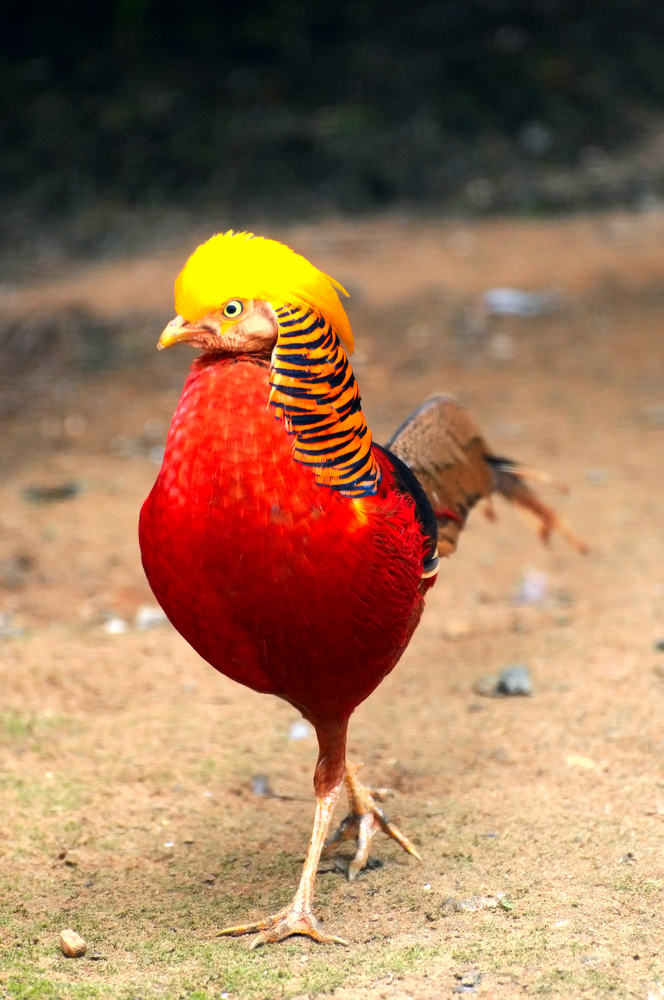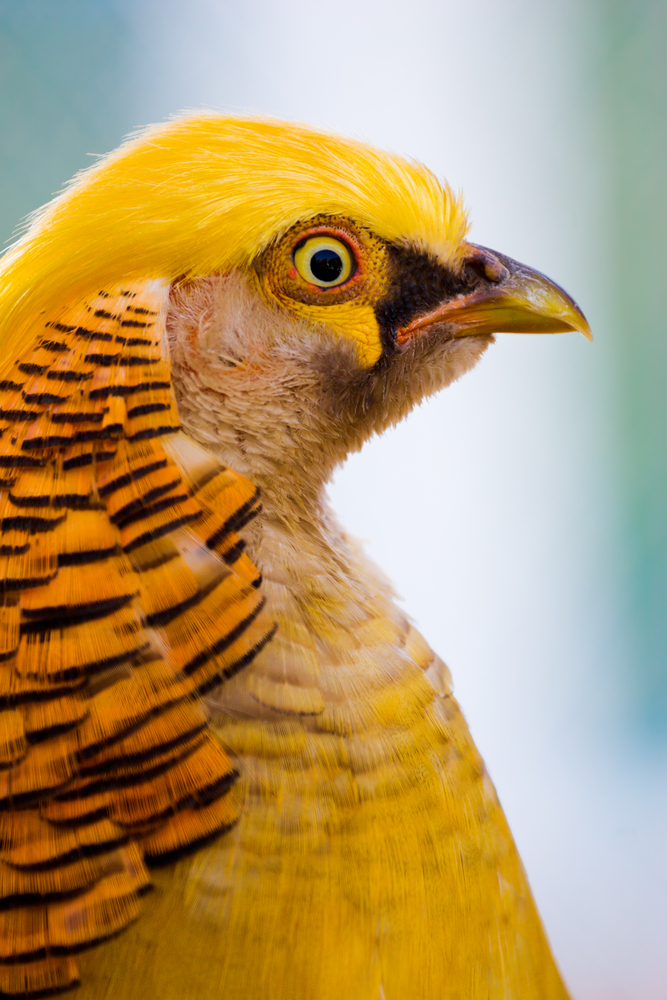Golden pheasant - Chrysolophus pictus
OriginsCentral and north-western parts of China.
Length
Cock 102-112cm (40-44in); hen 69cm (27in).

Appearance
Cock bird is truly stunning with reddish-orange underparts, a yellowish-orange head and a swirl of orangish feathers with dark blue barring forming the ruff or tippet on the neck. Below this is an area of metallic green plumage, with these feathers edged with black. The lower back is a rich burnished yellow, with the long tail feathers being brown broken by a black mosaic pattern. The hen is predominantly brownish, with her feathers also displaying black mottling.
Colour form
Several colour variants are known as the result of domestication. The most common of these is Ghigi’s golden pheasant, named after the Italian professor who developed this strain, which was actually first recorded from Germany. This is a paler form, instantly recognisable by its yellow underparts (see below). Less often seen are a salmon-chested variant and a dark-throated variety.

Availability
One of the most widely-bred of all ornamental pheasants, with young birds typically being cheaper to purchase than adults.
Sociability rating
Cocks are highly aggressive and must be kept apart from each other. A barrier to prevent them seeing each other is also essential if they are being housed in adjacent flights, or next to related species with which they can hybridise, such as Lady Amherst’s pheasant (C. amherstiae). Male golden pheasants can also become very aggressive towards intended mates at the onset of the breeding period.
Suitability
An ideal introduction to this group of colourful birds. Need to be kept in spacious aviary surroundings. Can be mixed well with touracos, which will appreciate the large area of the aviary and the planting scheme, without threatening the young pheasants when they hatch, unlike many larger softbills.
Care
Large, planted aviaries with open areas around bushes that provide good cover are recommended for these birds. The ground must be well-drained, to prevent the birds from becoming muddy in prolonged spells of wet weather. Although the pheasants themselves will not damage the mesh, ensure the structure is sufficiently strong to withstand the rigours of an attack by foxes.
Feeding
A pheasant ration, augmented with greenstuff and some livefood such as mealworms. Their food should be supplied in heavyweight, unspillable containers on the ground, with water provided in a drinking fountain. Feed under cover to keep the seed dry and deter rodents, especially rats which could harm young birds in particular, as well as spreading disease.
Breeding
It is not uncommon to rotate a single cock bird from one hen to another, particularly if it is hoped that the females will incubate and rear their own chicks, rather than having to rely on an incubator or broody bantam for this purpose. Alternatively a cock can be kept permanently with two or three hens. Never introduce a hen to an established cock in the breeding season especially, as she is likely to be persecuted.
Breeding data
A clutch is typically comprised of 12 eggs. Incubation lasts three weeks. It takes two years for these pheasants to attain full adult coloration, but males can sometimes breed before this stage.
Health concerns
Hardy but may suffer frostbite so encourage the birds to roost in open-fronted shelters rather than in the exposed part of the flight. Providing higher perching here should draw the pheasants to this part of the aviary at night.
Potential lifespan
Can be 10 years or more.